FREE-TO-ATTEND TECHNOLOGY PRESENTATION STAGE
Hall 8 Tuesday, June 4, Hall 8 - morning session
Upgrading your hardware-in-the-loop testing infrastructure: enhancing future mobility
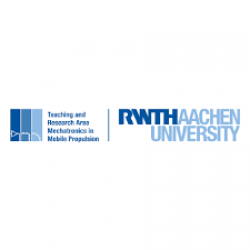 Dr Sung Yong Lee
Dr Sung Yong LeeChief engineer, teaching and research area mechatronics in mobile propulsion(MMP)
RWTH Aachen
Germany
This presentation delves into the significance of hardware-in-the-loop (HIL) within the context of advancing future mobility. It explores the pivotal role of HIL in validating and optimizing complex systems, highlighting its importance in accelerating innovation and ensuring the reliability of emerging technologies. Addressing the challenges inherent in HIL testing, the presentation discusses elements for building a flexible testing infrastructure tailored to the demands of evolving mobility solutions by combining physical and virtual testing. Upgrading HIL capabilities paves the way for more efficient development processes, safer transportation systems and ultimately, a more sustainable and interconnected future of mobility.
What the audience will learn
- The importance of hardware-in-the-loop testing for future mobility
- Challenges associated with HIL testing and strategies to overcome them
- Advanced HIL testing infrastructure tailored to the demands of tomorrow's evolving R&D
- How upgrading HIL capabilities can lead to more efficient development processes without extensive resources
- R&D strategy proposal: empowering industrial advancements in testing through the open infrastruture of the university
Battery production test – from cell to module and pack
 Manuel Hofmann
Manuel HofmannChief solution marketer, battery test
NI (Test and Measurement at Emerson)
Germany
In today's fast-paced battery production landscape, where ambitious goals for scalability and data ownership are at the forefront, understanding the critical role of testing and data analytics is paramount. Discover the challenges faced in achieving ambitious battery pack and module production goals and how to overcome them. Learn how to harness the power of the NI platform's capabilities and gain a competitive advantage through a total cost of ownership perspective. Explore the transformative potential of data analytics in optimizing production, reducing costs and mitigating risks.
What the audience will learn
- Key challenges and industry trends for battery cell, module and pack production
- Assembly quality assurance through electrical verification test techniques
- Insights to leverage data analytics for battery production
High-Speed Volumetric Capture and CAE Comparison
 Koji Sasaki
Koji SasakiAssistant manager
Photron Ltd.
Japan
In recent years, airbags have become more varied and diverse, and development speed is required.
In CAE development, it is difficult to reconcile this with experimental data, and it has not been possible to contribute to development speed.
This time, we used the High Speed Volumetric Capture developed by our company to perform a comparative study with CAE.
What the audience will learn
- Comparative validation of CAE data and experimental data in airbag development
- Overview of high-speed volumetric capture that can generate 3D models in time series.
- Overview of TimeSpaceView, software that enables comparison and differencing between the resulting 3D model and CAE results.
Fatigue damage estimation using an engineering/data science approach
 Thomas Kemmerich
Thomas KemmerichTechnical software expert
HBK – Hottinger, Brüel & Kjær GmbH
Germany
Monitoring damage and its potential causes in lab-tested structures requires extensive instrumentation that cannot be feasibly replicated in production assets. Since strain gauge instrumentation at a large scale is impractical, other proxy measurements for damage are needed. The presentation proposes a general framework for exploring data which is inspired from the field of data science. Using a combination of engineering calculation packages and open-source data science tools, it shows how engineers can further their understanding of the problem domain. A case study shows how a minimal instrumentation subset can be identified for the purpose of damage approximation.
What the audience will learn
- Using machine learning algorithms for fatigue damage predictions
- A mixed engineering/data science approach
- Complex signal processing of sensor data to clean data and extract relevant features
Catesby Tunnel: Taking Real-World Testing Repeatability to New Levels.
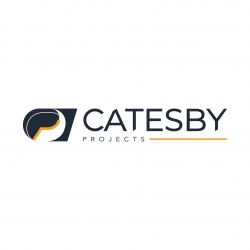 Dr Jon Paton
Dr Jon PatonManaging Director
Catesby Projects
UK
The first few minutes of this presentation will introduce the audience to Catesby Tunnel, with a brief overview of its history and transformation from Victorian railway tunnel, to a full-scale vehicle testing facility.
The presentation will then consider and explore other types of testing options available, including: wind tunnels, outdoor proving grounds and CFD, before outlining why Catesby Tunnel is different and how it offers both real-world and incredibly repeatable conditions. The presentation will then explore the types of full-scale vehicle tests that Catesby Tunnel can accommodate, including VCA approved WLTP coastdown tests.
What the audience will learn
- The benefits of conducting full scale vehicle tests at Catesby Tunnel.
- Some insight into best practice for conducting coastdown tests.
- How repeatability it the key to efficient and cost-effective testing.
Insights into the next generation of powertrain testing at AMG
 Jan Georges
Jan GeorgesSenior Engineer Test & Validation
tracetronic GmbH
Germany
Test teams need to increase their expertise in more diverse domains (e.g., cloud administration, vECU development, SiL tooling), but also maintain existing test environments. Developing the next generation of ECUs requires a complex interaction of different roles and expertise.
We present a modern setup of tools and methods at Mercedes-AMG for next generation powertrains to achieve simple and fast feedback for in-house development. Automated execution and environment-independent test descriptions are a crucial component for success. It reduces the complexity of test case creation significantly and increases the degree of reusability. Results are easily accessible, from SiL to HiL to ViL.
What the audience will learn
- Developing the next generation of ECUs is a complex interaction of different roles and requirements.
- Every day, new features and software artifacts are continuously tested and validated in agile software development.
- The latest technologies are used to test as quickly as possible while minimizing the use of resources.
- A testing platform is created from SiL to HiL to ViL.
- Direct feedback on software quality is always available to management and development.
An advanced E/E integration solution for e-drive systems
 Gerald Sammer
Gerald SammerPrincipal business development manager
AVL
Austria
This presentation dives into the details of an advanced testing solution for E/E integration with a focus on e-drive systems. The proposed system provides efficiency gains in the E/E integration process by utilizing a fully integrated functional testing workflow and toolchain.
What the audience will learn
- Challenges of today's E/E integration process
- Technical setup of an advanced E/E integration test system
- Benefits of this approach
Sensor Systems in Testing Automotive Driving Dynamics
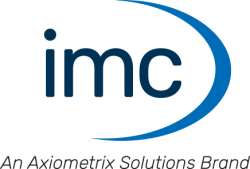 Florian Sailer
Florian SailerApplication Specialist Wheel Force Transducer and Telemetry
imc Test and Measurement GmbH - An Axiometrix Solutions Brand
Germany
The evolution of modern vehicle drive concepts provides new opportunities. However, it also presents challenges, particularly in the realm of precise vehicle dynamics assessment. This lecture delves deep into the world of measurement technology and provides knowledge to conquer these challenges. With the complexity and speed that innovations like Torque Vectoring bring, new and demanding requirements for measurement technology emerge. Learn about imc’s steering effort sensor, measuring wheels for torques and forces, and slip-free optical speed measurement – used in combination or stand-alone for a wide variety of measuring tasks, especially for development of EVs without EMC issues in prototypes.
What the audience will learn
- Measurement of drive and output torques incl. braking torques directly at the wheel
- Precise wireless measurements with wheel force and wheel torque transducers even in bad weather conditions
- Measuring steering torque, angle, steering velocity and acceleration in x, y and z directions with the original steering wheel
- The advantages of slip-free optical speed measurement
Hall 10 Tuesday, June 4, Hall 10 - morning session
Durability engineering 2.0: how Alpine utilized Compredict's virtual sensor platform
 Dr Daniel Dilmetz
Dr Daniel DilmetzHead of platform sales and partnerships
Compredict GmbH
Germany
Compredict is a leading expert in developing virtual sensors designed to supplant traditional hardware sensors. These innovative virtual sensors not only substitute for physical counterparts but also unlock enhanced functionalities in vehicles, accurately forecasting the lifespan of wear components like tires and brakes. Leveraging existing vehicle data exclusively, Compredict's cutting-edge development, the virtual sensor platform, is tailored for vehicle development. This platform empowers engineers to independently train virtual sensors utilizing vehicle data. In a compelling use case, Compredict demonstrates the application of this groundbreaking platform through a collaboration with the renowned sports car manufacturer Alpine.
What the audience will learn
- How the Compredict virtual sensor platform can be used to calibrate virtual sensors with existing measurement data
- How virtual sensors can be calibrated in the virtual sensor platform, even without prior knowledge of machine learning
- How durability engineering can be fastened and designed in a cost-efficient way
- How virtual sensors can help to reduce the risk of costly recalls and warranty claims, due to virtual sensor-backed vehicle testing
- How wheel force transducers can be virtualized
Innovative Sensor Telemetry Solutions for Automotive Challenges
 Dr Julia Manner
Dr Julia MannerDirector
MANNER Sensortelemetrie GmbH
Germany
MANNER Sensortelemetrie's presentation unveils advanced automotive solutions for demanding conditions. Addressing challenges like vibrations, oil, EMC, and temperatures up to 200°C, our focus is on high-stress automotive applications.
Highlighting the new generation of accurate, maintenance-free sensor telemetry, our talk emphasizes its versatility in capturing diverse sensor signals crucial for automotive challenges.
Introducing the latest developments, including flexible interface evaluation units (CAN, EtherCAT, Ethernet, and analog outputs), the presentation showcases a miniaturized unit with LED indicators. New software simplifies system monitoring and parameterization, creating a comprehensive monitoring system with smartphone app accessibility for enhanced user ease.
MANNER's portfolio provides crucial support
What the audience will learn
- Advanced Solutions: MANNER Sensortelemetrie unveils cutting-edge automotive solutions designed for challenging conditions, addressing vibrations, oil, EMC, and high temperatures.
- Versatility in signal capture: The talk highlights the new generation of maintenance-free sensor telemetry, emphasizing its adaptability to diverse automotive
- Latest developments include evaluation units with flexible interfaces (CAN, EtherCAT, Ethernet, analog outputs) for adaptable and robust automotive applications.
- The presentation highlights a miniaturized evaluation unit with three LED indicators, ensuring seamless monitoring and troubleshooting in automotive settings.
- New software is introduced for automotive system monitoring, parameterization, and creating a comprehensive monitoring system by defining threshold values.
Simcenter Testlab RT for XiL testrigs and simulators
 Ludo GIELEN
Ludo GIELENSr. Director Innovation & Incubation Testing Solutions and Smart Vehicle Technologies
Siemens Simulation & Test Solutions
Belgium
The use of an XiL approach speeds up sub-system functional performance validation in any prototype stage. Simcenter Testlab RT enables productive testing of "physical systems in-the-loop” on test rigs and simulators using Executable Digital Twins. It provides a performing and scalable software and hardware environment in which a physical component or system under test and the testbench connect to virtual representations of multiple operating environments. Using Simcenter Testlab RT, various test configurations are then configured and executed in hard real time . Such XiL approach shifts the physical prototype component test program earlier in the development cycle.
What the audience will learn
- How to speed up sub-system functional performance testing and validation in a lab environment
- Faster turnaround and more effective testing on XiL testrigs with Simcenter Testlab RT
- Intuitive definition of real-time co-simulation configurations involving multiple simulation tools, connected to the physical test environment.
- The value of synchronized physical and virtual sensors during XiL testing
Smart charging – from conformity to interoperability
 Dr Raphael Pfeil
Dr Raphael PfeilSenior product manager
Vector Informatik GmbH
Germany
To ensure customer satisfaction and the success of electromobility, a reliable charging process is crucial. This can be achieved by ensuring that implementations and products comply with known standards and are interoperable with each other. The increasing number of new standards, such as ISO 15118-20, and new EV and EVSE manufacturers on the market, are adding complexity and effort to ensure conformity and interoperability. This presentation will showcase solutions for efficient verification from software-in-the-loop to hardware-in-the-loop levels, focusing on conformity and interoperability.
What the audience will learn
- State of the art in conformity and interoperability testing for electric vehicles and charging stations
- Challenges of conformity and interoperability testing for electric vehicles and charging stations
- Approach for reducing efforts and costs for interoperability testing
Localization and mapping validation services for highly automated driving vehicles
 Marko Gustke
Marko GustkeDepartment Manager Intelligent System Functions
IAV GmbH
Germany
Ensuring the precision of both localization and mapping accuracy is crucial for the safety and reliability of highly automated driving vehicles. This presentation dives deep into the challenges and methodologies and IAV's proposed solutions for validating localization and mapping accuracy in dynamic environments. Through highlighted real-world applications, the audience will receive insights into utilizing cloud-based services.
What the audience will learn
- Insights into localization and mapping validation services for highly automated driving vehicles
- The proposed approach to overcome validation hurdles and enhance localization and mapping accuracy
- The relevance and functionality of IAV's cloud-based services,which contribute to enhanced safety and reliability
Cloud-based testing for HIL and SIL
 Hartmut Jürgens
Hartmut JürgensProduct Manager
dSPACE GmbH
Germany
Validation on system level does not stop at domain borders, especially in case of HPCs that cover multiple function domains. Testing by function developers, verification and validation by test teams is often done with specific test environments, tailored to the function domain. Collaboration of all participating team members and considering all test results is therefore challenging. Get inspired by dSPACE SIMPHERA’s Web-based frontends, that are tailored to multiple function domains. Benefit from options for cloud-based scalable SIL executions or HIL executions on registered resources for seamless validation in your team.
What the audience will learn
- Benefits of web-based frontends for testing
- Ease of worldwide collaboration based on cloud technology
- Introduction to SIMPHERA as open testing platform for multiple domains
Challenges in Cybersecurity Testing for Future Mobility Solutions
 Jorge Wallace Ruiz
Jorge Wallace RuizCybersecurity Technical Leader
DEKRA
Spain
During the presentation, we'll explore the challenges in security testing for future mobility solutions, highlighting the intricacies of embedded software in cars, and how this impacts in the way to test the security capabilities. We'll have an overview of the significance of security architectures, protocols, and the implementation of a Secure Software Development Life Cycle.
Additionally, the presentation will cover standards and regulations for automotive components, emphasizing the role of testing, vulnerability assessment, fuzz, and penetration testing in ensuring security.
Finally, we explore the composition as a potential solution to simplify the process of testing the cybersecurity capabilities of the
What the audience will learn
- Challenges and Boundaries in Automotive Cybersecurity Testing
- How to use the verification and validation tecnhiques to solve the cybersecurity issues
- Benefits of using composition in the certification strategy
New approach to hardware-in-the-loop automotive chassis simulation system
 Colin Gong
Colin GongTechnical support operations manager
Shanghai Tosun Technology Ltd
China
A new implementation method for a hardware-in-the-loop simulation system is introduced for automotive electronic chassis testing, which utilizes the automotive electronics toolchain TSMaster. With TSMaster's extensive hardware support capabilities, all kinds of test instruments and devices on the market can be integrated into the TSMaster software platform. With TSMaster's applets and toolboxes architecture, automotive dynamics engines like CarSim can be integrated into the testing environment.
What the audience will learn
- How to implement soft real-time simulation step by step
- How to build a soft real-time simulation system
- How to automatically configure vehicle models
- How to execute tests using graphical programming language
- How to develop your own testing toolboxes
Hall 8 Wednesday, June 5, Hall 8 - morning session
Intelligent labs – the future of development
 Steve Whelan
Steve WhelanProgram director
Horiba Mira
UK
The presentation will introduce the topic of development automation using new digital engineering methodologies of simulation, X-in-the-loop, digital twinning and bringing the real world into the lab. Horiba Intelligent Lab (HIL) is a package of solutions that enables more rapid and accurate development of propulsion systems for real-world efficiency, performance, emissions and range. By use of road-to-rig, XIL and digital twin methods, HIL eliminates much of the physical testing used in the development and validation of powertrain calibration. HIL delivers a reduction in development time and costs while providing a more robust and comprehensive validation of real-world attributes.
What the audience will learn
- The challenges of Euro 7 and real-world attribute development
- An approach for replicating real-world testing in the lab, eliminating the need for expensive climatic road tests
- An approach using digital engineering linking empirically generated digital twins to whole vehicle simulation to achieve high-accuracy predictions
- Use of co-simulated digital twins to undertake
- The potential of digital twins to enable accurate and rapid auto optimization
Non-contact torque sensors with innovative compensation of environmental effects of speed, temperature and parasitic forces
 Dr Ernst Manner
Dr Ernst MannerDirector
MANNER Sensortelemetrie
Germany
This presentation introduces the latest developments from Manner in the field of non-contact torque sensors, offering innovative compensation possibilities within the rotor for environmental effects such as speed, temperature, and parasitic forces. Manner measurement flanges stand out for their highest accuracy under various environmental conditions, providing a large transmission distance between the shaft and stator unit. They are insensitive to magnetic fields and effortlessly tackle challenges like shaft currents in hybrid or electric drives, as well as high speeds. The presentation sheds light on often overlooked environmental effects and presents innovative solutions for compensation, whether it be axial force effects due to helical gears or other parasitic influences.
What the audience will learn
- Innovative Compensation: Manner's non-contact torque sensors feature groundbreaking rotor compensation for environmental factors such as speed, temperature, and parasitic forces
- Exceptional Accuracy: Manner's flanges excel in accuracy, ensuring a significant transmission distance between shaft and stator units across diverse conditions
- Versatility: Flanges, immune to magnetic fields, handle challenges like shaft currents and high speeds in hybrid or electric drives efficiently
- innovative solutions for often overlooked environmental effects, including compensation for axial force effects and parasitic influences.
- innovative speed compensation for high-speed measurement flanges in hybrid and electric vehicles, ensuring enhanced accuracy in demanding applications
Charting New Routes: Innovations in Open Road Navigation for Testing
 Jonathan Deacon
Jonathan DeaconProduct Manager
OxTS
UK
Discover OxTS' groundbreaking advancements in Open Road Navigation for Automotive Testers. We'll explain how new IMU technology has reduced warm-up times and improved attitude/drift performance while removing ITAR restrictions, and then go into detail on how OxTS LiDAR odometry is boosting performance in GNSS-poor and GNSS-denied environments. Explore how these innovations, now available in real-time, redefine real-world automotive testing, offering unparalleled precision and flexibility.
What the audience will learn
- How improved IMU technology leads to better performance while avoiding export restrictions.
- What LiDAR odometry is and how it can be integrated into an INS solution.
- In what locations new technology blocks can now be deployed to generate usable data where it was previously unattainable.
Vehicle security: shifting left with HIL-based testing and penetration testing
 Ilya Dubnov
Ilya DubnovOnboard security research team lead
Argus Cyber Security
Israel
 Thomas Brandt
Thomas BrandtSenior consultant
dSpace GmbH
Germany
Vehicle penetration testing is essential to the vehicle type approval regulatory requirement and is crucial in uncovering security vulnerabilities in vehicles and their systems. However, navigating the resolution process can be time-consuming, with potential business impacts such as a delay in the start of production date. This presentation will explore a strategic approach to managing this process and mitigating risks by shifting left, harnessing hardware-in-the-loop (HIL) benches for automated cybersecurity testing in the development stages. It will also discuss how this proactive methodology identifies issues early and streamlines the finalization stages, ensuring your product’s security is comprehensively validated.
What the audience will learn
- Learn how HIL allows automated cybersecurity tests to be executed
- The pivotal role vehicle penetration testing plays in meeting and exceeding automotive cybersecurity regulations
- Insight into regulatory auditors’ criteria and considerations in evaluating cybersecurity measures
Operation experience with hydrogen storage systems at IABG's test infrastructure
 Torsten Semper
Torsten SemperHead of business development
IABG mbH
Germany
To meet the increasing need for the qualification of hydrogen components and systems, IABG has set up new test infrastructures. Based on generic test procedures for the qualification of hydrogen storage systems, the new facilities and planned expansions are presented in detail. Based on operation experience with hydraulic tests (pressure, burst and cycling) with substitute media and high-risk tests (bonfire, impact) on large CGH2 storage systems, these are discussed in detail. Furthermore, the status of the construction of the hydrogen test facility for cryogenic hydrogen applications will be explained.
What the audience will learn
- The demand for the safeguarding of hydrogen components and systems
- Generic procedure for a hydrogen storage system qualification
- Technical equipment for the safeguarding of hydrogen storage systems at IABG
- Insight into the operation experience of hydrogen storage system qualification
Using K&C hybrid simulation to accelerate active chassis development
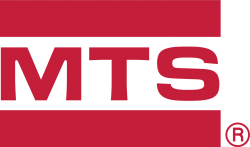 Thomas Stachel
Thomas StachelPrinicpal staff engineer
MTS System Corporation
USA
Meaningful evaluation of interconnected active systems used in next-generation ICE, electric and autonomous vehicles must extend from early-stage modeling through proving ground validation, which presents numerous simulation challenges for OEMs. MTS has proven that hybrid simulation can be used to establish vehicle-level simulation environments where developers can evaluate, integrate, drive and certify active systems well in advance of full vehicle prototypes. This presentation introduces mHIL K&C, a hybrid simulation approach that integrates vehicle models and an active suspension module under test to enable meaningful vehicle-level evaluation of suspension performance throughout the development cycle to realize faster, more efficient active chassis development.
What the audience will learn
- Introduction to real-time hybrid simulation (mHIL)
- Integration of mHIL with a kinematic and compliance system for active and semi-active suspension development
- Applications using an mHIL K&C to support earlier development and evaluation without a prototype
A power test system for high voltage and high speed
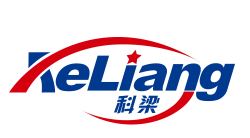 Yanbiao Sun
Yanbiao SunProduct manager
Shanghai KeLiang Information Technology Co. Ltd
China
A power test system for MCU is provided. The system is mainly composed of a simulation module, power amplifier module and emulation control module, which can flexibly emulate different motor types and power environments. The system has the following features: PMSM, BLDCM, IM and other types of motors can be emulated accurately; the ability to flexibly set the load curve through polynomial fitting, file import, remote communication, etc.; the ability to emulate mechanical failure, sensor failure, interphase short circuit, phase break, demagnetization, parameter drift divergence, overheating, three-phase imbalance and other fault scenarios; and the ability to emulate 10kHz current fundamental wave.
What the audience will learn
- MCU test system principle
- Compared with the traditional bench, what problems can be solved
- The realization of motor fault simulation
Accurately testing 4D imaging radars with CATR technology
 Asish Jain
Asish JainSolution planner
Keysight Technologies
Germany
A combination of high-performance processing units, advanced and cascaded millimeter-wave transceivers and MIMO antenna array enable 4D imaging radars. The MIMO antenna array makes the antenna aperture larger and, therefore, demands a larger far field distance for testing in both design verification and manufacturing stages. This brings the challenge of having a test range that large in your lab or production line. This paper will explain a smaller footprint and more accurate CATR technology. It will also share insightful test results showing CATR technology's impact on developing high-quality 4D imaging radars.
What the audience will learn
- The challenges of testing 4D imaging radars
- How can compact antenna test range technology solve these challenges and improve next-generation radar design?
- Insights on CATR technology with real measurement results and its comparison with the traditional approach
FDS – Fatigue damage spectrum – the real magnitude
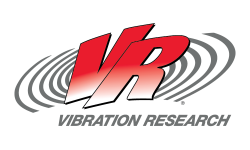 Peter-Johann Sikora
Peter-Johann SikoraHead of training and accreditation
Vibration Research Europe GmbH
Germany
With the market becoming more and more globalized and competitive, the importance of faster product development has forced the industry to find new ways to make product validation more efficient and less expensive. The biggest reform was the prediction of the mechanical endurance of components under the strain of vibration. This presentation provides an overview of the way to accelerate durability bench tests, to compare the severity of different vibration specifications. The method is FDS Test Tailoring.
What the audience will learn
- FDS – Test Tailoring for fatigue damage spectrum
- The goal: the same fatigue damage content of the original series, but in a reduced amount of time
- The tailored test method allows adaptation of the accelerated FDS profile to the needs and reliability targets
- Mission profile – reduction, severity, derivation
Hall 8 Wednesday, June 5, Hall 8 - afternoon session
Leveraging AI and Cloud Services for Measurement Data
 Waqas Ahmad
Waqas AhmadHead of InSynx | Process & Project Management
Müller-BBM VibroAkustik Systeme GmbH
Germany
In the era of data-driven decision-making, leveraging Artificial Intelligence (AI) and Cloud Services has become instrumental in unlocking the full potential of measurement data. In this talk, we show how organizations can harness AI algorithms and cloud processing to extract valuable insights from vast volumes of measurement data. From enhancing analysis efficiency to enabling trend and predictive analytics or real-time monitoring, join us as we explore the transformative capabilities of AI and Cloud Services in revolutionizing measurement data analysis and driving innovation across engineering and testing.
What the audience will learn
- How to easily utilize standard solutions for customized analysis processes
- How to speed up measurement data evaluation through automated validation
- How to gain faster accessibility of measurement data
openDAQ – unlimited data access via one software development kit
 Nils Röttger
Nils RöttgerCTO
Blueberry d.o.o.
Slovenia
Over the past two years, the openDAQ software development kit (SDK) has undergone substantial advancement, evolving from concept to actualization. openDAQ release 3.0.0 signifies the culmination of this development effort, with all key features fully developed and refined. This enables seamless integration of test and measurement products into a solution via its unified application programming interface (API) for discovery, streaming and configuration. Notably, openDAQ embraces well-accepted industry standards for achieving this. This advancement is poised to significantly streamline our professional life. How it works, who is already engaged, and how you can get engaged are explained in this presentation.
What the audience will learn
- What is the openDAQ software development kit?
- How does the openDAQ SDK enable the test and measurement market to speak one application programming interface?
- Which standards are supported by the openDAQ software development kit?
- Which devices talk openDAQ right now?
- How you can engage to openDAQ initiative, e.g. via open source contribution / working groups or joining as a memeber.
Digital twin for pre-silicon test & development environment for SDV
 Conhas Thakkar
Conhas ThakkarSolution Architect
Siemens AG
Germany
Siemens EDA, PAVE360 digital twin solution offers an open pre-silicon development and test environment. A shift left is required, where hardware and software are developed in parallel. PAVE360 allows customers to move from restrictive linear design flows to iterative, multidimensional flows with testing activities performed as part of continuous integration and validation of sub-systems.
By creating a virtual replica of the autonomous vehicle and its environment, the digital twin enables architectural exploration and software development followed by testing, validation, and optimization, all pre-silicon. In this presentation, we will explore the capabilities of such a solution in ADAS and IVI.
What the audience will learn
- Shift left of Software development
- Multi-user cloud deployment
- Cost effective bug revelations
- Fault injection and corner case testing without the need to damage hardware
Shape the future of in-vehicle AI robotic testing
 Chris Shieh
Chris ShiehCTO
Allion Labs, Inc.
Taiwan
This presentation examines the transformative potential of in-vehicle AI robotic testing in automotive innovation. It delves into the challenges confronting today's e-cockpit validation, emphasizing the critical need for enhanced testing methodologies. Through AI robotic innovation, it explores how the simulation of human-machine interaction revolutionizes testing protocols, enabling rigorous validation of software-defined vehicles. It outlines the myriad applications of AI robotic testing across the automotive ecosystem and highlights best practices for seamless adoption, implementation and deployment. Discover how in-vehicle AI robotic testing pioneers a new era of safety, reliability and efficiency in automotive technology.
What the audience will learn
- The challenges faced by the automotive ecosystem in today's e-cockpit validation
- AI robotic innovation makes the simulation of human-machine interaction possible
- Potential applications of AI robotic testing in software-defined vehicles
- Best practices for AI robotic testing adoption, implementation and deployment
Hardware-in-the-Loop (HIL): The Key Factor in BMS Design Verification
 Paul Bovingdon
Paul BovingdonTechnical Engineering Manager
Pickering Interfaces
UK
Battery Management System (BMS) design is essential for achieving optimal performance and user safety. In order to accurately simulate the real-world environment in which BMS will be used, HIL testing can provide an efficient way to assess the system's capabilities and rectify any potential faults. Learn how HIL testing can create a virtual twin of the system, allowing for safe and accurate tests to be conducted in a controlled environment. This physical representation can then be used to identify and mitigate potential risks before launching the BMS into production.
What the audience will learn
- Model-based design
- The advantages of HIL in BMS testing
- How your contemporaries are utilizing HIL specifically
- How HIL can be used to validate/verify your BMS
- Why using industry-standard platforms is the best solution
SEEL - The New Test Center for Electromobility
 Dr Martin Gustavsson
Dr Martin GustavssonResearch Director
SEEL Swedish Electric Transport Laboratory
Sweden
SEEL Swedish Electric Transport Laboratory is a test center for research and development of electromobility. The aim of SEEL is to improve efficient knowledge development and cooperation to accelerate the evolution of electrified transports. SEEL will also contribute to the establishment of a sustainable and competitive battery value chain in Sweden and Europe.
The automotive, aerospace, and maritime sectors, together with developers of relevant technology, will gain the possibility to test prototypes and products at independent test facilities with state-of-the-art equipment.
What the audience will learn
- Battery testing
- Charging function testing
- Electric Machine testing
- Complete Vehicle testing
Hall 10 Wednesday, June 5, Hall 10 - morning session
Pioneering virtual calibration for EV powertrain: AI’s role in performance
 Morgan Jenkins
Morgan JenkinsChief Product Officer
Secondmind
UK
The automotive industry's trend toward virtualization for more efficient, cost-effective and flexible development cycles requires the adoption of new AI approaches that enable virtual calibration. Secondmind is at the forefront of this trend, offering advanced active machine learning that can enable virtualization to enhance calibration sustainability and efficiency. Drawing on real-world challenges in EV powertrain calibration, this presentation will demonstrate how prioritizing virtual models over physical prototypes not only radically speeds up development cycles but also meets the industry’s innovation and environmental goals.
What the audience will learn
- Understanding why the shift toward virtual calibration in automotive development is critical for future sustainable development
- How AI, specifically active machine learning, is enhancing calibration precision, vehicle performance and efficiency through end-to-end exploration of multidimensional spaces
- How virtual calibration accelerates EV powertrain development and innovation
- Strategies for integrating advanced machine learning into the early-stage vehicle design process
- Insights into future trends in automotive technology development, focusing on AI’s impact on design and development processes
ADAS Testing Revolution: Simulating Scenarios from Ground Truth
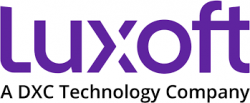 Heiko Ruth
Heiko RuthTechnical Director
Luxoft GmbH
Germany
MicroVision and Luxoft introduce an advanced tool that creates precise Ground Truth (GT) from LIDAR and camera data for real-world traffic scenarios, incorporating metadata like curve radii and driving scenarios crucial for testing ADAS systems. A significant advantage of this approach is the ability to generate simulated scenarios from GT, instantly creating complex traffic conditions or weather changes with just one click. This feature allows OEMs and Tier1 suppliers to efficiently simulate specific test scenarios. This method significantly reduces development time and costs, facilitating rapid creation of critical test scenarios, thereby enhancing the and reliability of autonomous driving systems.
What the audience will learn
- Understanding the importance of accurate Ground Truth data in ADAS testing.
- Learning how to efficiently generate simulated scenarios from Ground Truth data.
- Exploring cost-saving benefits through simulation of complex driving conditions.
- Gaining insights into enhancing the safety and reliability of autonomous driving systems.
- Discovering innovative approaches to test and validate ADAS under diverse conditions.
Advanced machine mapping with result verification and MU calculation
 Klaus Lang
Klaus LangHead of business development EMEA
HBK GmbH
Germany
Machine mapping is an essential portion of the development and calibration of electric drives. Getting reliable data at stable setpoints is key for accurate and repeatable power and efficiency results. All results need to be interpreted in the light of the underlying measurement uncertainty, which varies by nature from setpoint to setpoint. This is a real challenge and a time-consuming task for electric drive test engineers. The presented power analysis solution not only calculates all the electrical and mechanical power and efficiencies but also delivers – in real time – information about the stability and the achieved measurement uncertainty for each individual setpoint.
What the audience will learn
- How to do electric machine and drive maps faster
- How to obtain information if a mapping setpoint is stable and the results are valid
- How to obtain the measurement uncertainty for each setpoint automatically
- How to integrate between a modern power anaylzer and an automation system
Beyond measurement technology: solutions for testing electric vehicles and components
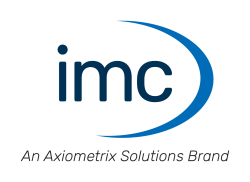 Christian Walther
Christian WaltherBusiness development
imc Test and Measurement GmbH, an Axiometrix Solutions brand
Germany
As the automotive industry accelerates toward electrification, precision measurement in the electric vehicle (EV) powertrain has become more critical. The presentation delves deep into the realm of EV powertrain measurements, providing insights and solutions that are essential for test and measurement engineers in the automotive industry. It will explore the unique challenges posed by the electrification of the powertrain and how cutting-edge measurement technology is rising to meet these challenges. The comprehensive agenda covers a wide range of topics, ensuring you gain valuable knowledge and actionable solutions.
What the audience will learn
- Powering up: measuring EV battery systems. Power measurement during the charging of battery systems, including WLTP measurements
- Efficiency matters: the battle between mechanical and electrical power and how measuring efficiency can optimize EV performance
- Turnkey test bench solution for traction motors: back-to-back test stand; temperature measurements in the rotors of electric motors; rotor-position sensor test
- Traction in focus: an in-depth look at measuring wheel forces on EVs, a crucial aspect of their energy balance and efficiency
The transition from domain to zonal network architecture for SDV
 Felix Ottofuelling
Felix OttofuellingBusiness development manager EU
Intrepid Control Systems
Germany
The automotive industry is undergoing a huge transformation ranging from electrification to autonomous driving. The new powertrain and autonomous functions are impacting the in-vehicle network architecture. Automotive ethernet is fundamental to these changes to provide a much higher bandwidth for data communication. The classical domain architecture is substituted by zonal architectures with zonal ECU controllers to aggregate compute power and intelligence in fewer ECUs in a central approach. In this transition, the integration of legacy networks gives huge challenges in power management and wake/sleep architecture. Learn how the zonal architecture is the enabler to build the software-defined vehicle.
What the audience will learn
- Limitations of the domain architecture
- Reasons and advantages of the zonal architecture
- Shift of computing architecture to central high-performance ECU and zonal ECUs
- Enabling technology automotive ethernet, IEEE protocols, Open Alliance, Autosar
- How to integrate legacy networks and wake/sleep power management
An efficient solution for decoupling test automation process from PLM
 Manuel Zabelt
Manuel ZabeltProduct owner
tracetronic GmbH
Germany
Product lifecycle management (PLM) solutions ensure that the software quality of new driving functions can be assessed reliably. Trying to address all aspects of testing and test automation (test cases, test benches, test execution, pipelines) within PLM solutions leads to huge challenges. How can these challenges be addressed effectively? The presentation shows that decoupling test automation and PLM processes can be the key to success. An independent test automation platform can not only execute highly complex test setups automatically but also provide fast, valid input to PLM systems. With the right solutions in place, experts can each focus on their specific tasks.
What the audience will learn
- Getting a clear picture of current product quality is complex (requirements, components, releases, variants, test cases, test results)
- It gets even more complicated!
- The tracetronic approach: only things that actually help determine quality should end up in product lifecycle management
- Effective test management tooling in the context of product lifecycle management in heterogeneous test setups from manual testing to CI
Italdesign: a flexible design approach to embedded systems SW testing
 Claudio Sala
Claudio SalaHead of EE validation and testing
Italdesign
Italy
Italdesign has a strong background in vehicle engineering, including electronics integration. This comprehensive and thorough understanding of single components and their interaction was fundamental to the SW testing approach, focusing not only on DUTs but also on the systems they belong to. At Italdesign, the design approach starts from system requirements and test cases, to define all the toolchain aspects from HW to SW, by technology benchmarking, keeping into account scalability, easy switch among market variants/platforms and interaction with signals from multiple domains (audio/video, radio, GPS, mobiles, analog, digital). Some use cases from Italdesign’s portfolio will be showcased.
What the audience will learn
- Toolchain design against DUT system requirements and test cases
- Scalability and coverage of multiple market variants and vehicle platforms
- Supplier benchmarking based on requirements and functional domains
Managing the transition into a new era of connectivity
 Wolfgang Horrig
Wolfgang HorrigGlobal Sales Manager
EA Elektro-Automatik
Germany
How hyperconnected energy and data technology will affect the Test & Measurement industry
The world’s electrification and data technology shape how multiple industries blend together for new, sustainable mobility solutions. The Automotive industry no longer relies on one energy source or supply chain. Instead, it must meet the challenge of a massive new energy storage and distribution ecosystem while accounting for more kinds of electric vehicles than ever. In addition, a new era of connectivity is rising, and so is the need for a broader knowledge of testing procedures and modern test equipment to meet the two newest challenges.
What the audience will learn
- Why connectivity will be the new trend in e-mobility
- Which mobility solutions are on the rise
- What's becoming important in the test and measurement industry
Modernizing Control Software Testing of Electric Powertrain Components
 Dr Dusan Majstorovic
Dr Dusan MajstorovicChief Technology Officer
Typhoon HIL
USA
This presentation will talk about the change in testing requirements that the transportation electrification brings along with it. The transition from a hardware defined vehicle to a software defined one is taking place. Instead of internal combustion engines, which lose performance over time, the modern electric vehicle is based on agile development and continues to improve performance and functionality during the operational product maintenance. Increased and improved HIL Testing of these components spans beyond the safety criticality standards and drives opportunity to streamline improvements and enable a safe and ever improving over-the-air update-based vehicle.
What the audience will learn
- Standardizing the tools for all powertrain component control software
- Improving efficiency of software teams by increasing collaboration
- Ease of use with a HIL Platform supporting testing of e-Drives/e-Axles, On-Board Chargers, and BMS systems individually and their integration
Hall 10 Wednesday, June 5, Hall 10 - afternoon session
ITECH Test Solution for EV Electronics
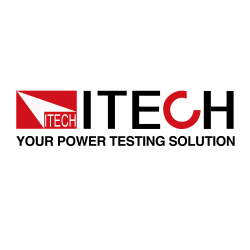 Christian Korreng
Christian KorrengProduct Manager
ITECH ELECTRONIC CO.,LTD.
Germany
Join us as we delve into essential EV testing strategies. In part one, we'll explore grid adaptability testing for EV inverters. Part two focuses on EV battery simulation and testing. Finally, we'll uncover seven key examples of utilizing ITECH instruments for EV electronics testing. Through these insights, we aim to enhance EV efficiency, safety, and reliability, driving forward the future of sustainable transportation.
What the audience will learn
- Grid Adaptability Test
- Battery Test and Simulation
- Typical Cases
Reduce energy usage by 35% using hybrid HPU technology
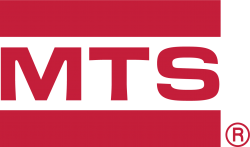 James Hennen
James HennenSenior business development manager
MTS Systems
USA
The need to maximize energy efficiency and comply with regional and global decarbonization mandates poses daunting challenges for test laboratory managers. In response, MTS has engineered a new, hybrid approach to hydraulic power generation that employs state-of-the-art digital displacement (radial flow) technology to modulate flow during typical demand, while engaging conventional swash plate (axial flow) technology to achieve maximum efficiency during peak use. This presentation examines the benefits of this new hybrid power generation technology, presents data that demonstrates its effectiveness and explores the numerous ways it will be integrated throughout existing test laboratory infrastructure to dramatically reduce energy usage.
What the audience will learn
- A technical understanding of an innovative hybrid approach to hydraulic power generation
- The benefits of hybrid HPU technology and the data supporting energy efficiency claims
- How hybrid HPU technology can be integrated into existing test laboratory infrastructure
A Toolbox for efficient EV-range development and certification
 Dr Björn Ebel
Dr Björn EbelHead of System Line Management
AVL Zöllner GmbH
Germany
BEV-testing with focus on range-development and certification requires a charging and discharging solution with high accuracy in order to comply with legislative requirements. AVL Charger is a product, that is streamlined to charging and discharging of battery electric vehicles with a focus on compliance and efficiency realized by its integration into AVL's automation system. Thanks to its modular design, it is scalable to the actual customer need supporting the customer workflows in the best possible way.
What the audience will learn
- Legislative charging/discharging requirements
- Overview on AVL Charger
- Optimized BEV-range-certification workflows with AVL Charger
In-vehicle network security
 Ionel Ghita
Ionel GhitaTechnology specialist
Keysight
Romania
 Marty Gubow
Marty GubowTSN program manager
Keysight
USA
How is it, inside your vehicle network? Can you prove it is secured? The presentation is focused on practical ways to test and measure security components' efficiency and performance for in-vehicle network applications. Several customer case studies will highlight the benefits of system testing versus individual 'in-isolation' testing of components. Sections include L2 encryption – MACsec; interoperability validation; performance measurements; negative testing and robustness; gateway testing; protocol fuzzing; malware injection;
and denials of service mitigation.
What the audience will learn
- L2 encryption – MACsec
- Gateway security testing
ADwin-Gold-III for End-of-line testing, HIL and Teststand automation with Simulink/ADbasic/ADwin-C
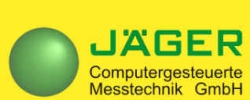 Heinz Beimert
Heinz BeimertInternational Sales and Consultant Manager
Jaeger Computergesteuerte Messtechnik GmbH
Germany
The ADwin-Gold-III completes the ADwin product family, providing real-time solutions for end-of-line testing, hardware-in-the-loop applications, test bench automation, and data acquisition with online analysis. The ADwin system's core is a local deterministic real-time CPU with nanoseconds of jitter to trigger events. It is suitable for applications ranging from kHz to MHz. ADwin devices are available in standard or customizable OEM versions, offering a variety of analog and digital signal types as well as interfaces such as CAN, SENT, LIN, PROFINET, EtherCat, and RT-Ethernet-UDP. The ADwin system integration and project team builds custom solutions, using tools such as ADbasic/ADwin-C or Simulink.
What the audience will learn
- Built Hardware-in-the-Loop applications with ADwin-Gold-III and Simulink, or using ADwin-C/ADbasic in combination with dotNet, Python, Matlab, LabView® or other tools.
- Examples of multi-axis controls and feedback analysis in test stands with ADwin and with a high timing precision in real-time.
- Use a RT-Ethernet based UDP to communicate between test bench devices and ADwin systems in deterministic real-time.
- End-of-line tests in production for CAN, SENT and LIN devices. Results are stored in a traceable production line databases.
Advance controller development with a pragmatic digital approach
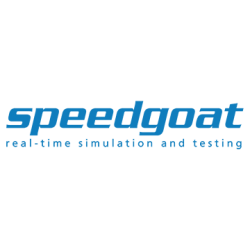 Dr Mathieu Lu-Dac
Dr Mathieu Lu-DacApplication engineer
Speedgoat GmbH
Switzerland
As the world advances in electric mobility, sustainable energy, autonomous technologies and medical devices, engineering firms face the challenge of innovating and testing new control designs. Digital twin simulation and model-based engineering are increasingly used to develop and test embedded control systems efficiently. However, gaps in workflow hinder the seamless transition from design to validation. The presentation introduces a fully connected model-based engineering workflow that integrates requirements, tests and models into a single digital thread, facilitating a smooth transition across development stages, from architecture to real-time verification, rapid prototyping, code deployment and hardware-in-the-loop testing.
What the audience will learn
- Accelerated development and testing of embedded control systems through digital twin simulation and model-based engineering
- Improved efficiency in prototyping, code deployment and testing with end-to-end automation and real-time testing
- Streamlined transition from requirements to design and validation, minimizing workflow gaps and promoting artifact reuse
Hall 8 Thursday, June 5, Hall 8 - morning session
Scenario-based safety evaluation and SOTIF readiness with advanced autonomous simulation
 Dr Minhyuk Son
Dr Minhyuk SonVice president
Morai
Korea
The safety and reliability of autonomous driving technology have become pivotal challenges within the modern automotive industry. Ensuring the stable operation of autonomous vehicles in unpredictable situations is essential for safety. Rigorous testing and validation across various scenarios is imperative. In this light, adherence to the SOTIF (Safety Of The Intended Functionality) standard, which aims to minimize risks and secure safety in autonomous driving technology, is increasingly crucial. This session will explore the advanced features of Morai's autonomous driving simulation platform and will provide insights into strategies for complying with SOTIF.
What the audience will learn
- The crucial role of simulation in bolstering the safety and efficiency of autonomous driving systems
- The importance of verifying the safety of autonomous driving systems, along with current trends in global safety standards
- About the SOTIF (Safety Of The Intended Functionality) standard and how it impacts autonomous driving technologies
- How thorough testing and validation can ensure consistent operation of autonomous vehicles in unforeseen situations
- Practical strategies for meeting and implementing the SOTIF standard during the development and testing phases of autonomous vehicles
Efficiently testing OTX-based diagnostic tester using simulator tool
 Dr Alexander Karmazin
Dr Alexander KarmazinDirector Automotive Products
RA Consulting GmbH
Germany
The OTX standard (ISO 13209) is gaining ground in the automotive field. As test sequences in OTX are often developed generically for different control units or even model series, they must also be tested accordingly using regression tests. The use of a simulator for vehicle diagnostics can greatly increase the efficiency of development and quality assurance in this area. In the talk, we will discuss the usage and benefits of diagnostic simulator for development of OTX based diagnostic sequences on the concrete examples.
What the audience will learn
- Vehicle diagnostics
- OTX based diagnostic tester
- Diagnostic simulators
Overcoming challenges for early system validation of automotive driving functions
 Dr Thomas Bauer
Dr Thomas BauerBusiness area manager
Fraunhofer IESE
Germany
Digital twins have emerged as an innovative and powerful approach in engineering processes across various industries. A major challenge is to provide the operational and execution infrastructure for digital twins on the system level, as they comprise different types of analysis and control components.
This presentation addresses the challenges and solutions for creating and operating digital twins for automotive driving functions in practice. The validation platform FERAL is introduced, which enables the construction of digital twins through virtual prototypes and virtual test scenarios by coupling simulation models and tools, existing code and virtual hardware platforms. Results from practical applications are shown.
What the audience will learn
- The benefits and challenges of introducing virtual validation for automotive driving functions
- Technical assets and tools that address the challenges and obstacles for virtual validation in automotive projects
- How digital twins are constructed by coupling simulation models and tools, existing code and virtual hardware platforms
- How traceability between engineering assets (e.g. requirements, models, validation scenarios and results) is achieved
- Examples and results from projects with automotive companies
Test benches with a high rigidity and stiffness using UHPC
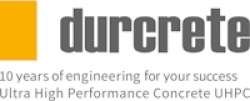 Dr Bernhard Sagmeister
Dr Bernhard SagmeisterManaging director
durcrete GmbH
Germany
Due to the high natural frequencies of electric motors, it is necessary for the bases of test equipment to be very rigid so that resonance frequencies do not distort the recording of test results. Cast iron and welded steel constructions reach their limits here. The presentation describes the use of a solid, cement-bonded mineral casting (ultra-high-performance concrete or UHPC) with a modulus of elasticity of 80,000MPa for testing tables and benches.
What the audience will learn
- Use of UHPC for test benches
- Design of machine elements with UHPC
- Analyses of machine elements with UHPC
Testing of High Power Drive Trains at High Speeds
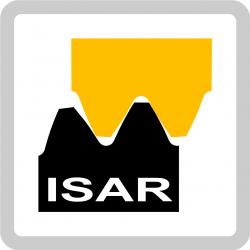 Albert Wimmer
Albert WimmerManaging Director
Isar Getriebetechnik GmbH & Co. KG
Germany
In the context of e-mobility applications trending rapidly towards more and more powerful drive systems, two main issues can be identified regarding appropriate facilities to measure, test and record drive systems:
- The boundary conditions of installation space for testing of complete e-axles is getting more and more difficult because of high integration of e-drives.
- Integration of measurement technology (torque cells) has to be adopted to high speeds. At a certain point you can either use specific measurement devices or - much easier - use the right couplings.
- Examples of integrated central shaft cooling are shown.
What the audience will learn
- Testing of most powerful e-drives and e-axles
- Modular test rigs and retrofit of existing facilities
- Intelligent integration of measurement systems
- Newly developped high-speed joint shaft for test rig applications
Hall 10 Thursday, June 5, Hall 10 - morning session
Generated reality helps autonomous driving close the loop of data
 Xiaohang Yin
Xiaohang YinCOO
ZD Automotive
Germany
The value of scenario data in autonomous driving development is vital. The source of traditional scenario data mainly relies on real vehicles recording data. Data costs remain high and scenario coverage is very limited. Now we can use digital twin technology to transform real road data into virtual scenario models and effectively generalize the behavior of traffic participants to achieve exponential growth in scenario data generation. The high-precision data acquisition, digital twin, simulation and back-injection toolchain launched by ZD Automotive could create high-coverage, high-quality data at low cost and facilitate autonomous driving to efficiently close the data loop.
What the audience will learn
- Traditional data limits – reliance on costly real vehicle recordings with limited scenario coverage
- Digital twin and generated reality innovation – transform road data into virtual models, exponentially increasing scenario data
- Efficient data solution – high coverage and quality data at low cost, closing the autonomous driving data loop
Thermal testing of HV components with a keyhole method
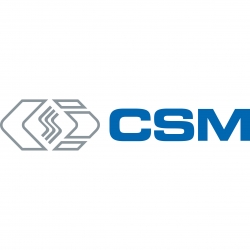 Timo Eich
Timo EichBusiness development manager
CSM Computer-Systeme-Messtechnik GmbH
Germany
The safety and performance of high-voltage components is significantly affected by temperature. In particular, HV batteries are susceptible to temperature effects. Therefore, temperatures have to be monitored extensively alongside high density inside HV components in the development process. The question now is, how can many temperature channels be realized without sacrificing the sealing of components and influencing their overall behavior? In this presentation Dipl.-Ing. Timo Eich discloses a revolutionary approach to precisely measure hundreds of temperatures inside HV components with pin-point accuracy utilizing a single digital, high-end temperature measurement system with a minimally invasive character.
What the audience will learn
- Why classical instrumentation with thermocouples or RTDs fails when lots of measurement points are demanded inside of HV components
- Why the verification of thermal propagation models demands high-precision positioning of sensors and how to archive precise positioning
- How over 500 sensors can be acquired with only one single cable led out of the device under test
- How an accuracy of temperature measurement down to .1 Kelvin can be reached
- How signal noise and interference are eliminated by the use of a digital measurement system
Open Ecosystems: The Art of What's Possible with Dynamic Data
 Stefan Kremer
Stefan KremerInternational Sales Director
Müller-BBM VibroAkustik Systeme GmbH
Germany
In today's engineering and testing landscape, the concept of open ecosystems has emerged as a pivotal force driving innovation and digitalization across industries. Within this paradigm, dynamic data acquisition stands as a cornerstone, enabling organizations to harness the power of real-time information for unprecedented insights and agility. Delving into the interplay between open ecosystems and IIoT / Edge / Cloud Computing, we are exploring the artistry of what's possible. From revolutionizing decision-making processes to fostering collaborative innovation, join us on a journey through the transformative potential of these symbiotic elements in shaping the future of interdisciplinary engineering and testing.
What the audience will learn
- How data ecosystems may change testing processes
- The typical scope of applications
- How to become a part of an open data ecosystem
Strategies for maintaining compliance amid changing regulations
 Antonio Bonetti
Antonio BonettiManager of Sales and Solutions
Aptiv
Italy
Regulators from the EU and around the world are constantly updating the legal requirements for automotive manufacturers, particularly regarding safety and the environment. The advent of electric vehicles (EVs), advanced driver assistance systems (ADAS), and autonomous vehicles are driving the development of new standards and pose new challenges for engineers. This presentation focuses on strategies for flexible performance indicators as regulations evolve. It highlights the value of edge analytics, event-based data acquisition, video, and customizable dashboards for maintaining compliance. And it includes a demonstration showing an example of how some manufacturers are using these tools and processes today.
What the audience will learn
- Evolving regulations mean that manufacturers need flexible vehicle data acquisition strategies.
- Edge analytics provides rapid information about vehicle performance and regulatory compliance.
- Event-based data acquisition prevents data overload and provides engineers with fast access to relevant information.
- Video monitoring, aided by AI, speeds up troubleshooting and ensures test coverage.
- Customizable dashboards make it easy to track compliance and test coverage, while also aiding in root-cause analysis.
Data-driven validation for the safety of automated driving
 Max Winkelmann
Max WinkelmannData scientist
IAV GmbH
Germany
The automated vehicle (AV) industry faces a significant challenge: how can it effectively identify and assess the safety risks associated with AVs? A wide range of test setups, driving scenarios and simulation models offer valuable testing elements for validation, yet their effective application remains unclear. The presentation discusses how artificial intelligence and machine learning methods can link the crucial testing elements purposively. Consequently, the validation of automated vehicles becomes data-driven, and tests traceably contribute to safety validation and the AV release.
What the audience will learn
- With the 'multipillar approach', the UN recommends combining virtual and real tests to validate the safety of automated vehicles
- Through active learning, scalable virtual test setups provide broad scenario coverage that can be characterized by probabilistic models
- Based on knowledge gained virtually, transfer learning allows real tests to be parameterized in a targeted manner
- The findings from the real tests are in turn used to improve the models used in the virtual tests
- Used iteratively, the data-driven linkage of virtual and real tests uncovers critical scenarios, and test results become increasingly reliable
